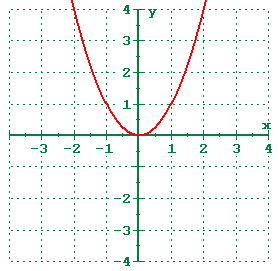Anyways, let's get to the real stuff. Today, we are still in chapter 3, so previous post we learn about the reciprocal of a linear. We discover how its looks like and also we describe the key features of the function. For today's lessons we will doing the same thing, but using quadratic function.
How does quadratic function looks like? Basically quadratic function has this form of general equation, (F(x)=ax^2+bx+c). For example, f(x)=5x^2+10x+1. The shape of the graph is like this :
This graph may not shown the actual measurement for the example of equation I gave you, but this how quadratic function looks like. Now lets see how the reciprocal of quadratic looks like...
Again, this picture may not show the real exact measurement of the equation given but still this is how reciprocal of quadratic looks like. Now lets discover and describe the key feature of this reciprocal ;
- The restriction on the domain - the denominator cannot be zero, so equate the denominator to zero and calculate the x-value.
- Domain and range - { x E R, x cannot equal to the restriction}, { y E R, y cannot equal to the horizontal asymptote}
- x-intercept and y-intercept - To find the x-intercept we have to substitute y=0, y-intercept we have to substitute x=0.
- The end behaviour
- as x approaches vertical asymptote from the left, y approaches......and as x approaches vertical asymptote from the right, y approaches.........
- as x approaches negative infinity, y approaches........and as x approaches positive infinity, y approaches........
- The horizontal asymptote is equal to the restriction of domain, the vertical asymptote equal to the restriction of range.
- We can also use the increasing and decreasing interval or the increasing and decreasing of slope to describe the key features of a reciprocal of quadratic.
Here are videos about reciprocal of quadratic function in details.
These three videos explain in details about reciprocal of a quadratic function. It shows how to find the key features of reciprocal and also how to draw the graph without using graphic calculator. Enjoy!! See you next time with chapter 3.3....Bye!!


No comments:
Post a Comment